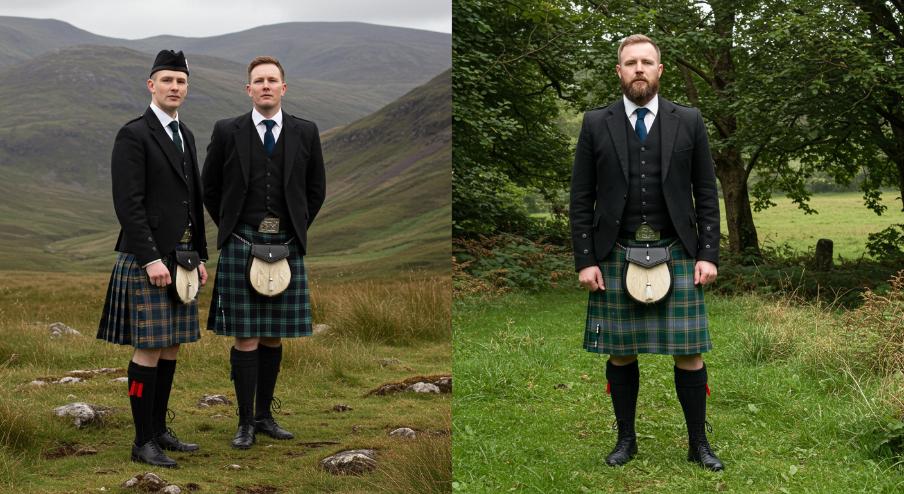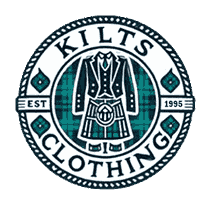The Revival of the Irish Kilt: Modern Trends in Traditional Fashion

The Irish kilt, once a proud symbol of heritage and tradition, is making a striking comeback in contemporary fashion. While deeply rooted in Irish culture, its resurgence today signals a growing interest in blending historical garments with modern trends. People now incorporate what was once reserved for special occasions like weddings and cultural festivals into everyday fashion. This article explores the journey of the Irish kilt, from its historical significance to the evolving styles shaping its presence in the modern wardrobe.
The Origins and Evolution of the Irish Kilt
The rich Celtic traditions of Ireland intertwine with the history of the Irish kilt. Originally crafted from wool, kilts were worn as part of the national dress, often featuring tartan patterns that signified regional or family clans, much like the Scottish kilt.
However, during the 19th and early 20th centuries, the Irish kilt gradually fell out of everyday use, replaced by more conventional attire. Despite this decline, the kilt remained a potent symbol of Irish pride, mainly worn during cultural events and national celebrations. In recent years, there has been a renewed enthusiasm for traditional Irish garments, with the kilt-making a significant return to the fashion landscape.
Why the Irish Kilt is Making a Comeback
Several factors have contributed to the resurgence of the Irish kilts in modern fashion. Here are some of the key influences behind its growing popularity:
1. Cultural Revival
The increasing global appreciation of Irish culture has played a crucial role in the renewed interest in the kilt. Irish music, literature, and cinema have gained widespread recognition, prompting people of Irish descent to reconnect with their roots. The kilt has emerged as a powerful symbol of this cultural identity, particularly during events like St. Patrick's Day and Irish heritage festivals.
2. Influence of Celebrities and Public Figures
Celebrities and influential figures have bolstered the visibility of kilts in mainstream media. Musicians, actors, and fashion designers have embraced the kilt, incorporating it into their public appearances, music videos, and runway collections. These endorsements have played a pivotal role in making the irish kilt men and women more widely accepted as a fashionable garment.
3. Gender-neutral and Inclusive Fashion Trends
The fashion industry has been shifting toward more inclusive and gender-neutral styles, and the Irish kilt fits perfectly into this movement. Traditionally worn by men, people now reimagine kilts for all genders, thanks to their adaptable design and versatility. Many modern designers are reinterpreting the kilt to align with contemporary fashion trends, making it accessible to a broader audience.
4. Connection to Heritage and Personal Expression
For many individuals with Irish ancestry, wearing a kilt is more than just a fashion statement—it's a meaningful way to celebrate their heritage. Customized kilts featuring family tartans or symbolic motifs allow wearers to personalize their garments, blending tradition with individuality.
The Modern Transformation of the Irish Kilt
The Irish kilt has evolved significantly to suit the demands of contemporary fashion. Today's designs incorporate innovative cuts, fabrics, and styling options that make them suitable for a variety of occasions.
1. Contemporary Cuts and Fits
Traditionally, kilts were designed with a structured, formal silhouette, often extending to the calf. Modern kilts, however, offer a range of lengths and fits, from the classic knee-length version to shorter, edgier designs aimed at younger fashion enthusiasts. Additionally, kilts now feature more comfortable waistbands and flexible pleats, allowing for ease of movement and a relaxed fit.
2. New Fabric Choices
While wool remains a staple fabric for kilts, designers have introduced lightweight alternatives such as cotton, denim, and synthetic blends. These materials make kilts more practical for everyday wear, offering options suited for different climates and casual settings. From breathable summer kilts to heavier, warm styles for colder months, fabric innovations have expanded the appeal of the Irish kilt beyond formal occasions.
3. Expanded Color and Pattern Selection
Though traditional tartans remain favorite, modern kilts now come in a diverse range of colors and patterns; bold hues, custom tartans, and even subtle geometric designs have gained popularity, allowing wearers to choose kilts that reflect their style. This creative approach has made kilts more appealing to fashion-forward individuals looking for a unique wardrobe addition.
4. Versatile Styling for Different Occasions
The Irish kilt is no longer limited to formal events. Today, it can be styled for both casual and high-end fashion settings:
- Formal Wear: For special occasions, kilts can be paired with tailored jackets, dress shirts, and formal footwear, creating an elegant ensemble perfect for weddings or cultural gatherings.
- Casual Styling: A growing trend is the incorporation of kilts into streetwear. When paired with t-shirts, leather jackets, or sneakers, kilts become a stylish, laid-back fashion piece suitable for everyday outings.
The Irish Kilt in High Fashion and Streetwear
The Irish kilt's influence extends beyond cultural events, making waves in both street style and high fashion.
1. Street Style Popularity
Kilts have gained traction in streetwear, with influencers and trendsetters integrating them into their wardrobes. By pairing kilts with contemporary clothing such as oversized hoodies, boots, and layered accessories, they create bold and unconventional fashion statements. This fusion of old and new has made the kilt a standout piece in modern street fashion.
2. Runway Recognition
International fashion designers have incorporated kilts into high-fashion collections, showcasing them in major runway shows. Whether styled as a statement piece or blended seamlessly into avant-garde designs, kilts have gained recognition as a sophisticated yet rebellious garment that transcends tradition.
3. Celebrity Endorsements
Icons in the entertainment and fashion industries, such as Harry Styles and other trendsetting figures, have embraced the kilt, further solidifying its place in modern fashion. Their influence has helped destigmatize kilts as a niche garment, making them a more widely accepted fashion choice.
Sustainability and Ethical Fashion
As the demand for sustainable fashion grows, the Irish kilt aligns with eco-conscious values. Many kilt-makers are prioritizing sustainability by using organic wool, ethically sourced cotton, and handcrafted production methods. Unlike mass-produced fast fashion, traditional kilts are designed for durability, making them a long-lasting and environmentally friendly clothing choice.
The Future of the Irish Kilt in Fashion
The revival of the Irish kilt demonstrates how tradition and modernity can coexist harmoniously. No longer confined to historical reenactments or special occasions, the kilt has evolved into a versatile fashion piece that caters to diverse styles and identities. As inclusivity, sustainability, and heritage appreciation continue to shape the fashion industry, the Irish kilt remains a dynamic and cherished garment for years to come.
Whether worn as a nod to ancestry, a statement of individuality, or a bold fashion choice, the Irish kilt proves that timeless traditions can always find a place in contemporary wardrobes.


